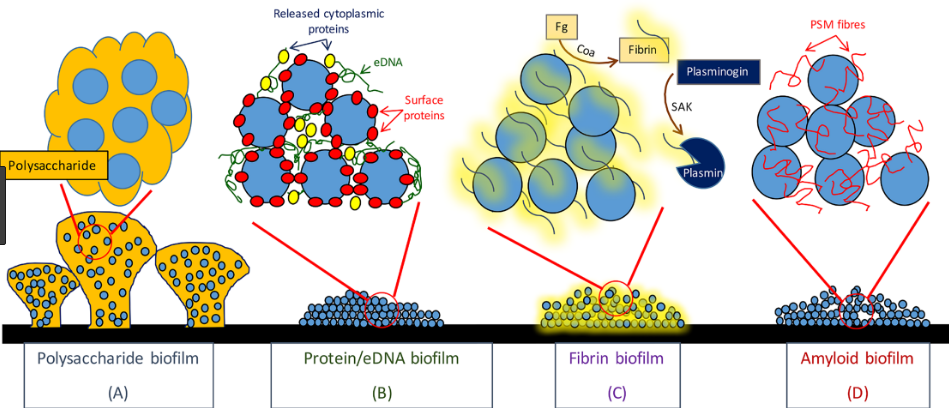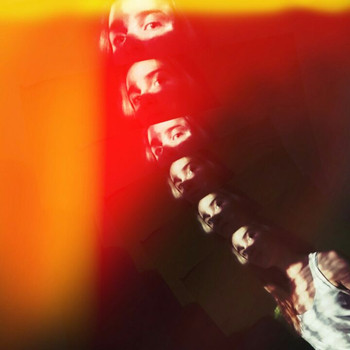Where is biofilm found?
1 Answer
Biofilms can be found on almost all surfaces in the environment, whether natural (plant and animal) or synthetic materials (medical implants and industrial surfaces). Biofilms will form on every surface in non-sterile aqueous or humid environment.
Explanation:
Biofilm is a community of microorganisms that are irreversibly linked to the surface, producing extracellular polymeric substances (EPS

Picture 1.: types of EPS/ biofilm from A to D. EPS can be composed of polysaccharides, proteins, DNA, fibrin, PSM fibers...
Surface colonization, Picture 2., and subsequent formation of biofilms is best studied in bacteria , although fungi, algae, protozoa and viruses are also isolated from biofilms in industrial and medical environments.

Picture 2.
Biofilms can grow in the most extreme environments like:
Yellowstone National Park-hot springs
Mickey Hot Springs, Oregon- thermophilic bacteria

Stromatolites- formed by microbial biofilms, cyanobacteria

In the human environment, biofilms can grow in showers, inside water and sewage pipes, floors and counters...

Picture 3. Biofilm in a pipe
 )
)
Picture 4. Biofilm on a toothbrush
In the human body
The immune system supports biofilm development in the large intestine and this is associated with the biofilm developed in the gut. The appendix contains a big amount of these bacterial biofilms and this can help the gut to reinoculate with good flora.

Picture 5. Dental plaque is also a form of biofilm, Streptococcus mutans is the "main ingredient"

Picture 6. Infections associated with the biofilm are challenging to root out. Mature biofilms display tolerance towards antibiotics and the immune system. Biofilms often form on implanted devices as you can see on the picture.

